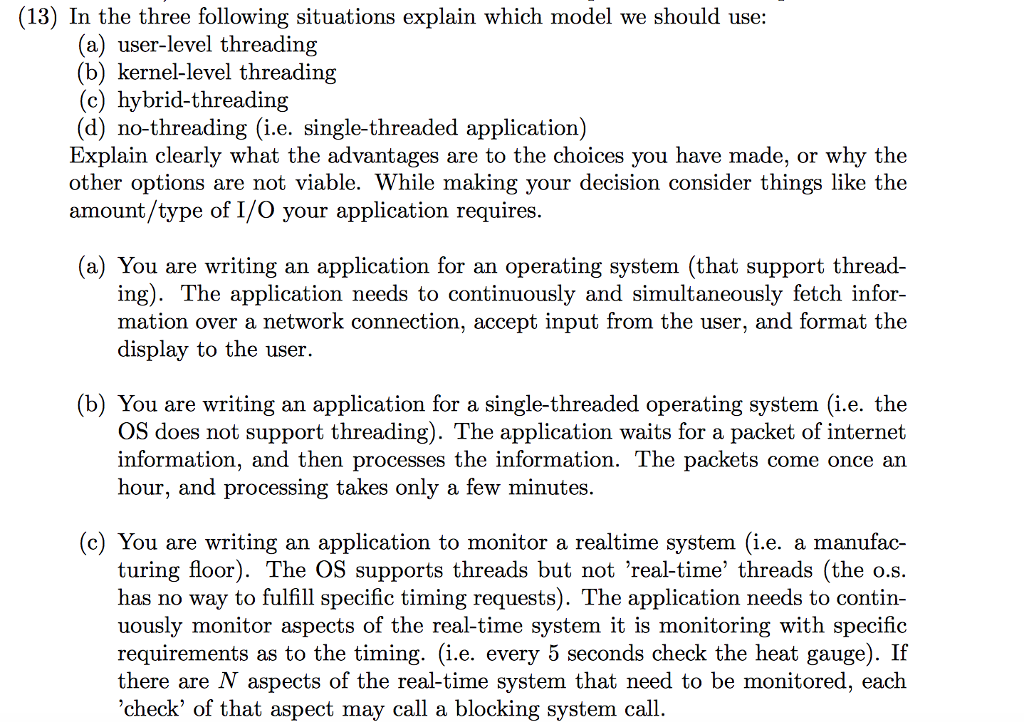Answered step by step
Verified Expert Solution
Question
1 Approved Answer
(13) In the three following situations explain which model we should use: (a) user-level threading (b) kernel-level threading (c) hybrid-threading (d) no-threading (i.e. single-threaded application)

Step by Step Solution
There are 3 Steps involved in it
Step: 1

Get Instant Access to Expert-Tailored Solutions
See step-by-step solutions with expert insights and AI powered tools for academic success
Step: 2

Step: 3

Ace Your Homework with AI
Get the answers you need in no time with our AI-driven, step-by-step assistance
Get Started


